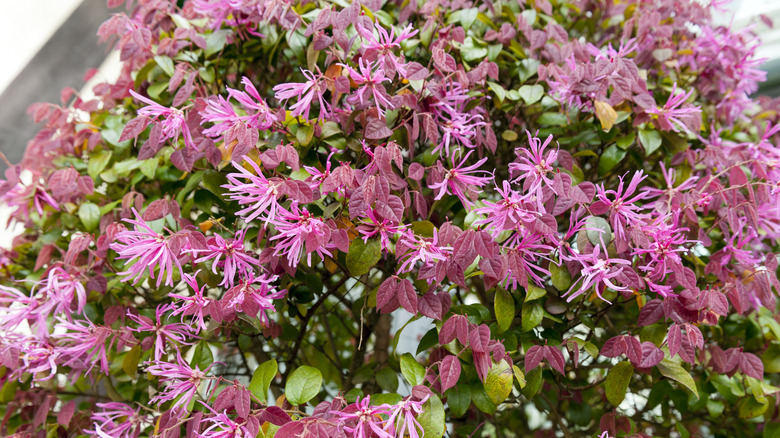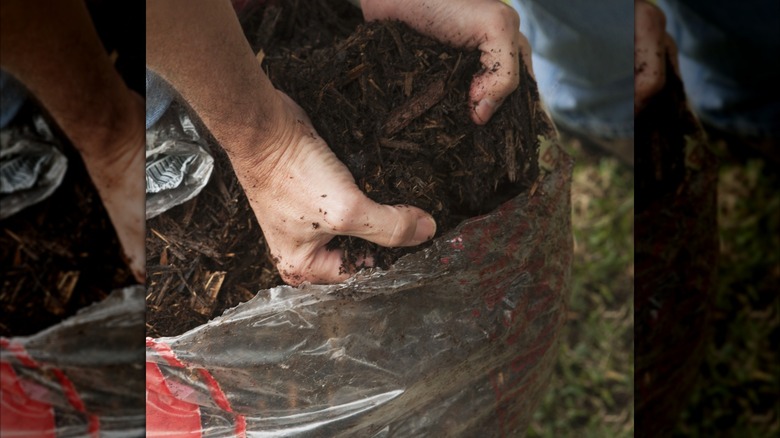What To Do With Your Chinese Fringe Flowers During Winter
We may receive a commission on purchases made from links.
As winter arrives, frost and icicles may look magical on a cold morning, but the cold's effects on your Chinese fringe flowers (Loropetalum chinense) can be devastating. It's important to make sure Chinese fringe flowers can thrive in your climate and garden conditions. Chinese fringe flowers prefer full sunlight to partial shade, favor moist soil, and have a good tolerance for cold — down to about 5 degrees Fahrenheit. However, you can still take steps to help them weather the winter, like adding a layer of mulch for insulation to protect their roots from freezing. Learning the right care for your Chinese fringe flowers will make them a great addition to your garden.
In the wild, Chinese fringe flowers, a member of the witch hazel family, can be found in Japan, China, and even the Himalayas. They were first introduced to the United States in the 1880s and produce white or pink blooms from March through April. Growing up to 10 feet tall, they're often used for garden borders or as a privacy screen between properties. These flowering shrubs do best in USDA hardiness zones 7 through 10a, but a little winter prep can go a long way in helping your Chinese fringe flowers deliver their delicate, frilly blooms come spring.
How to protect Chinese fringe flowers from freezing
Refreshing your garden mulch each winter is essential for protecting your plants. Mulch is especially important for Chinese fringe flowers, as it helps insulate the roots, which are vulnerable to freezing temperatures. In late December, place a layer of mulch, such as Scotts Deep Forest Brown Garden Mulch, available on Amazon, around your Chinese fringe flowers. You'll want it to be up to 4 inches deep to provide adequate frost and cold protection, especially if your plants were newly planted in the fall. This winter mulch application will help protect the plants from dropping temperatures and help the soil retain moisture.
In addition, covering your plants with a protective blanket on the coldest winter days can help ensure their survival. If your area is forecasted to drop below freezing overnight, consider using a Garutom plant cover or this burlap gardening roll, available on Amazon, to protect your Chinese fringe flowers.
Over the winter, most perennials, including Chinese fringe flowers, enter a genetically controlled state of dormancy. It's not necessary to try to force dormancy by reducing the availability of water. In fact, plant roots need moisture over the winter to help protect them. However, Chinese fringe flowers are susceptible to root rot, so be careful not to overwater them. If your plants do end up damaged over the winter, let them leaf out in the spring, and then prune any branches that remain dead.

